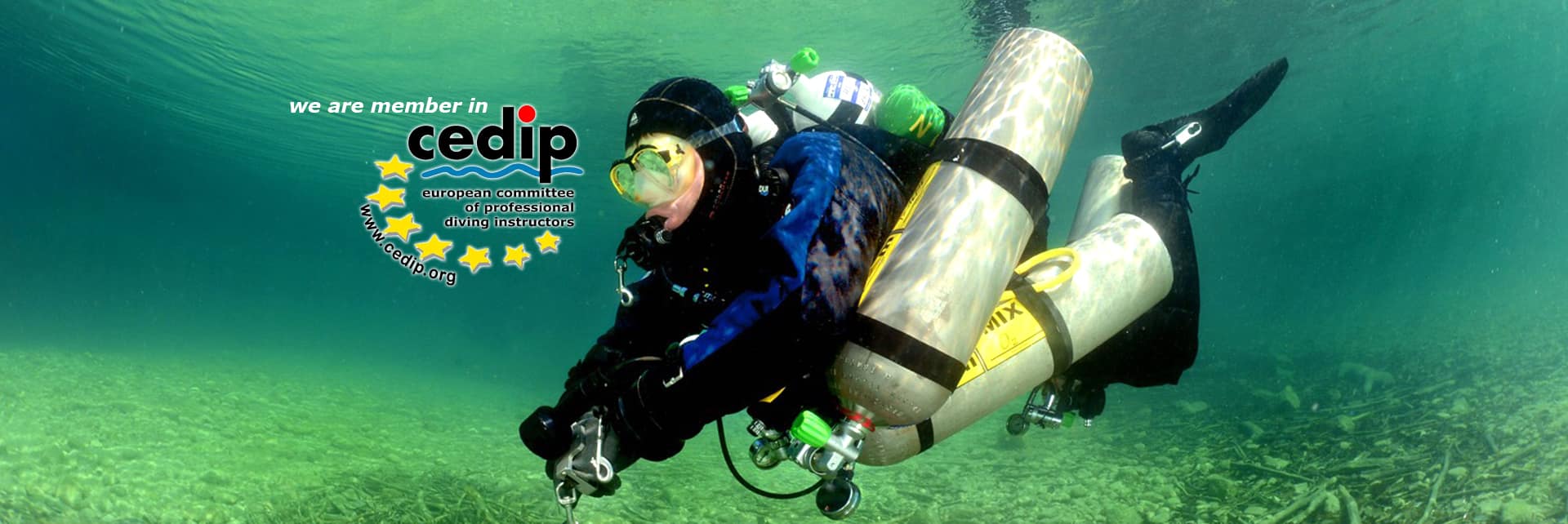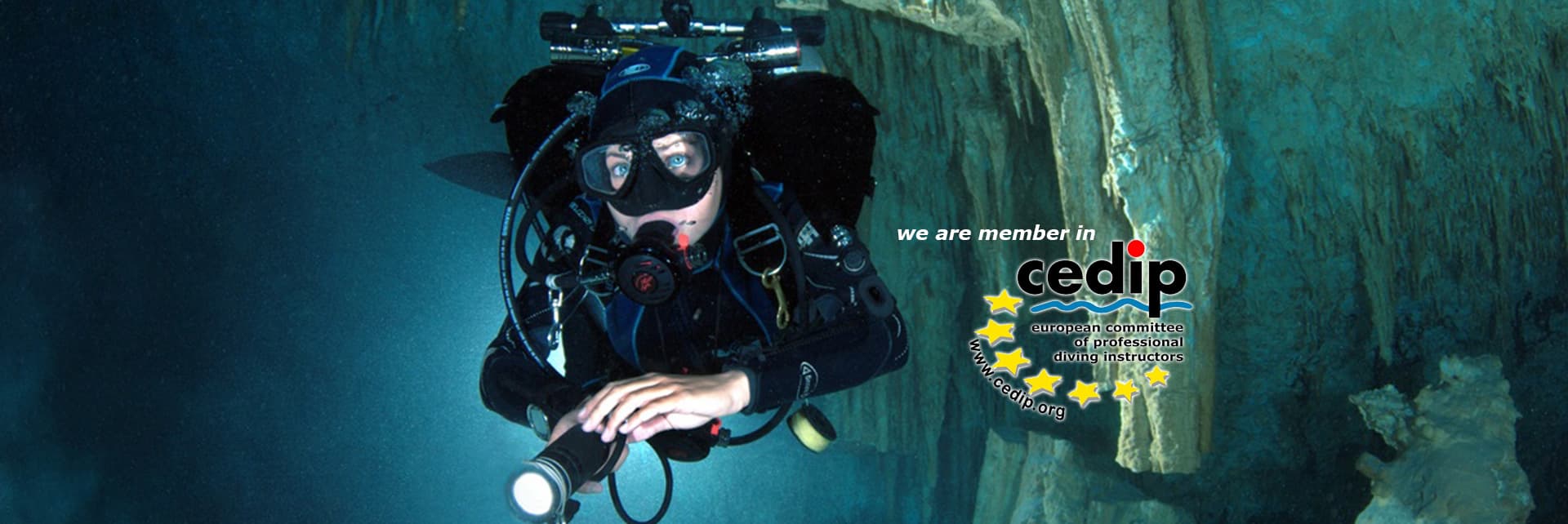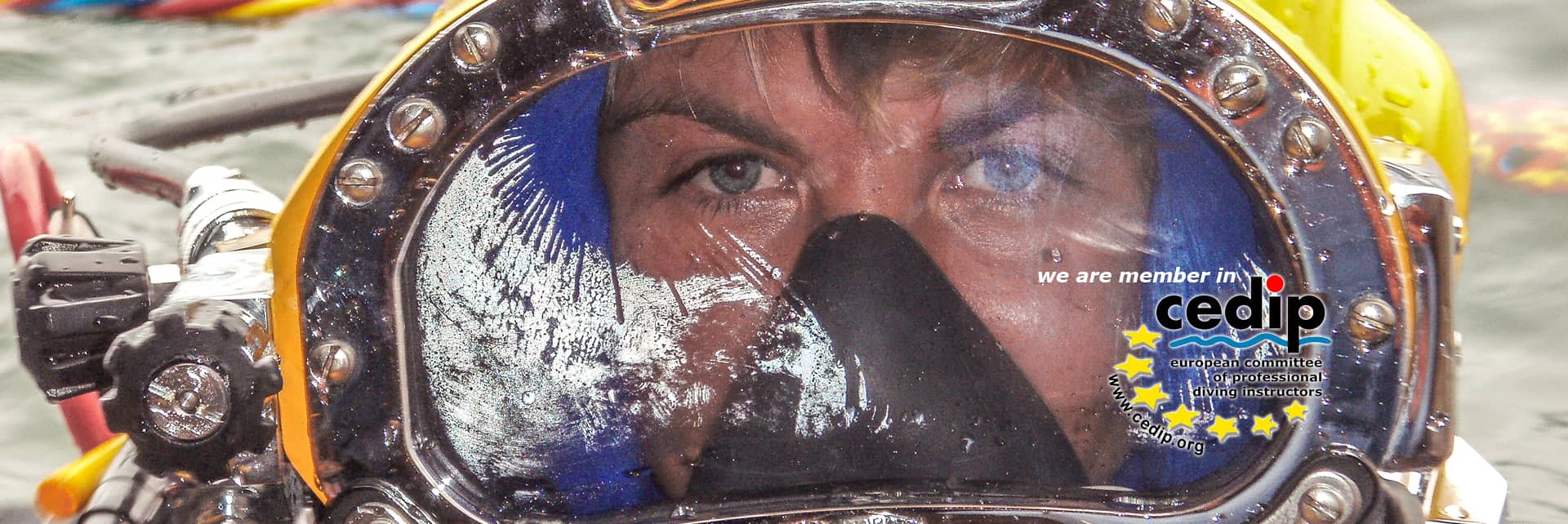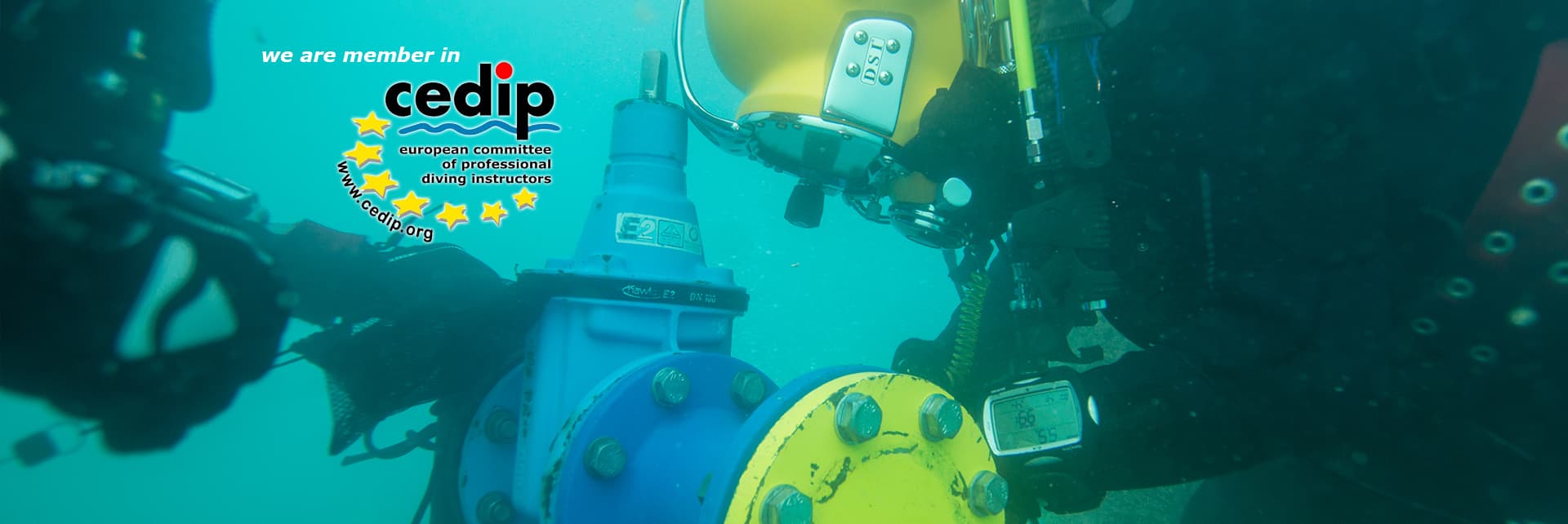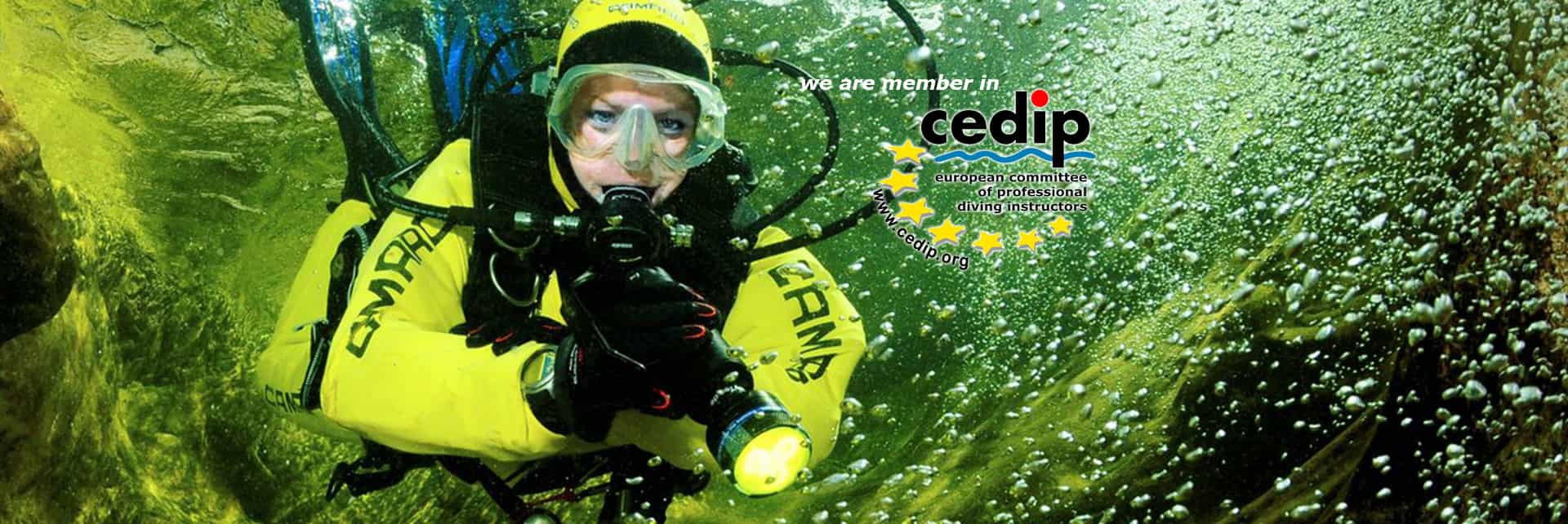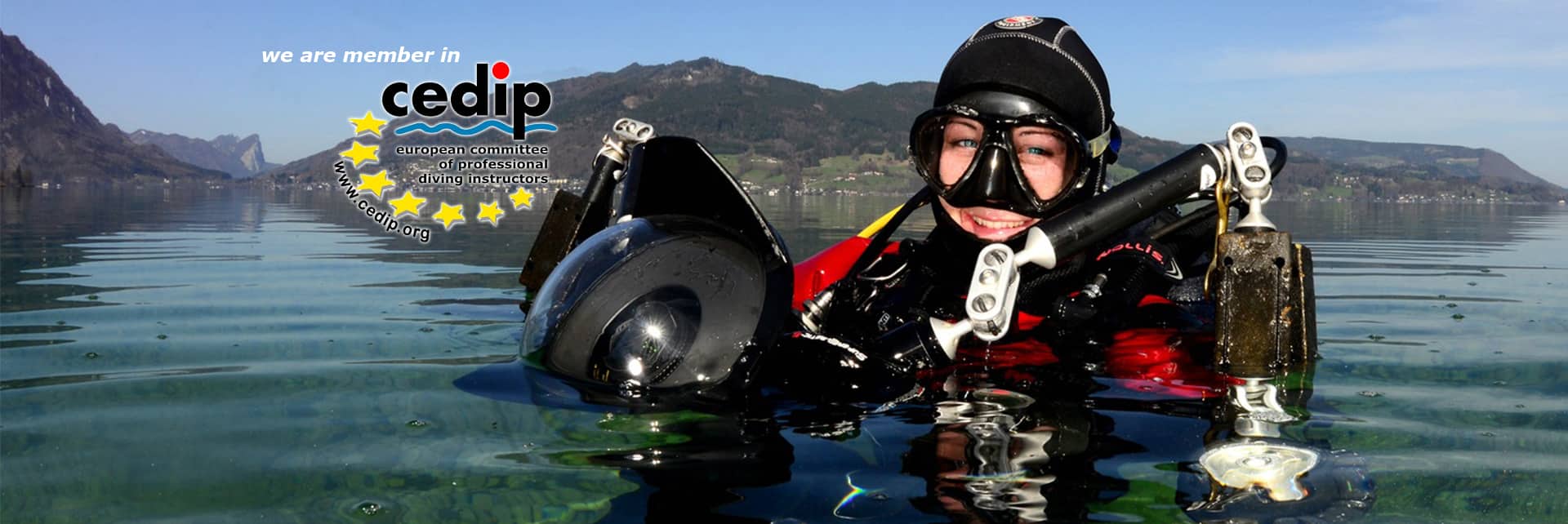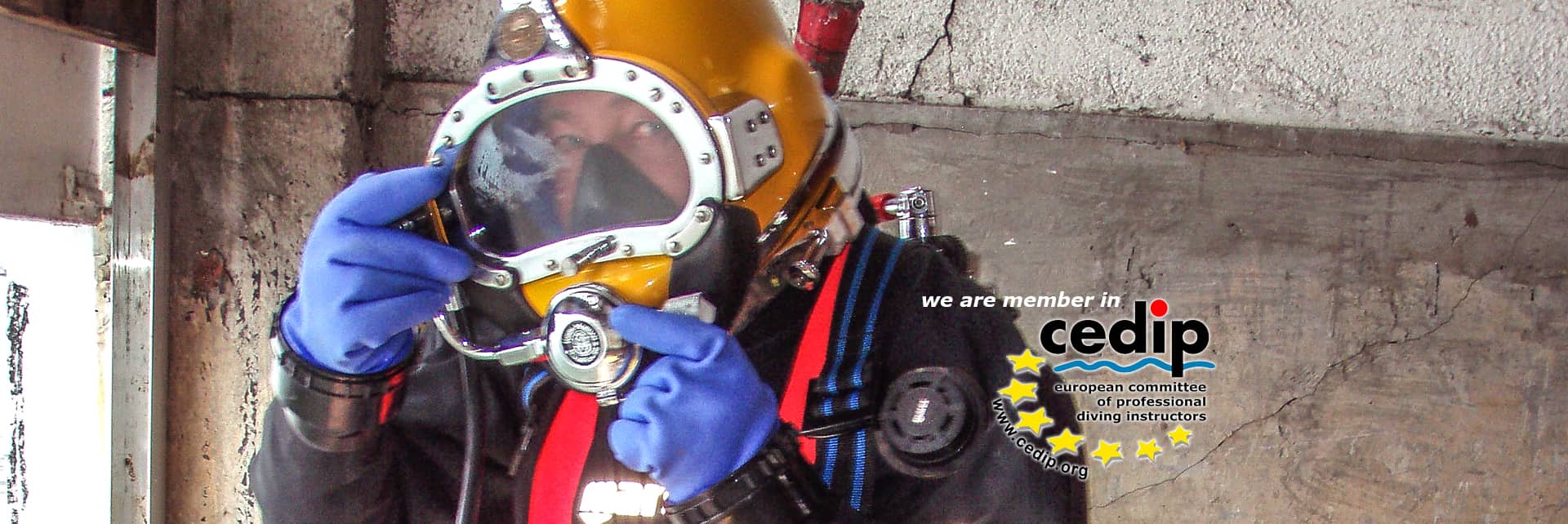Basics of device technology and physics
Myth ice creamer
It should be mentioned in advance that the demand valve performs a masterpiece of lever technology with every breath. With an inhalation resistance of approx. 20 millibar (0.020 bar), it controls a valve that is tight against bottle pressure of up to 300 bar! The pressure of the inhaled air is still converted into the respective ambient pressure. The air is filtered and delivered in exactly the amount we need.
It should be understandable that this “breathing process” is subject to physical laws that can lead to the notorious “icing”. What is talked about a lot but whose background and process are rather unknown. This ignorance uses, among other things, the diving industry for strategic advertising mailings such as “Particularly powerful, compensated regulator” “Icing-proof due to membrane control” “Absolutely reliable due to piston control” etc. etc. Due to the ignorance of many divers and diving instructors, many illogical theories about the icing of regulators have made their way into the diving scene over the years paved. The understanding of the Joule-Thomson effect has stuck, at least to some extent. Currently, various manufacturers are still advertising their icing-proof regulators and sometimes come up with theories that want to make us believe that the earth is flat in our age.
How great the fear of icers is among divers is shown, among other things, by the fact that many diving instructors from various organizations do not conduct training below 20m in our waters. For safety reasons, of course. Nevertheless, or maybe because of this, there are always divers who are certified to 40m but have neither the skills nor the knowledge to safely conduct deep dives in cold water. A few more reasons for the fear of the icer are also the ignorance, the many rumors about the icing and the divers often move themselves in areas where they or their diving buddy lack the skills and the diving experience in an emergency. But as the saying goes: “In an emergency, just drop the lead!”
Being able to continue breathing from an iced and deflating device, as is often taught, is only possible in the early stages. After a few breaths, the outflow pressure is so great that the diver can no longer keep the regulator in his mouth. It is important with an icer to interrupt the air flow so that there is no further cooling and the ice crystals can melt. The ice crystals created by the icing and moving at high speed can permanently damage the device or the seals (this process can be compared to sandblasting) and the device is no longer suitable for use even after “defrosting” and continues to blow off.

It should also be noted here that a diver does not necessarily have to know the differences between inner and outer icing, for example. We, the EOBV, train our divers more intensively according to our training system and require a complete knowledge of the basic laws and procedures at the latest from the diving group leader level. These basics enable the scuba diver to continue on the way to becoming a diving instructor, research diver, engineer diver, etc. Furthermore, a well-founded training creates a safe diving behavior which enables our diving instructors to carry out training safely even at great depths.
Adiabatic compression
As we already know from our basic diving course, “ at constant volume, the pressure of a given amount of gas increases in the same ratio as the absolute temperature ( Gay-Lussac law ) ” . For us divers, this means not only that the pressure in the bottle increases due to heat, but also that a diving bottle warms up when it is filled. Of which every diver can convince himself. The reason for this is the faster movement and the friction of the molecules, which have less and less space available in the diving bottle due to the filling. This thermal effect is also called “adiabatic compression”.
Joule-Thomson effect
The Joule-Thomson effect is a thermal effect when gases expand at a throttle. In a nutshell, this states that “gases cool down when they expand at the throttle” . This thermodynamic effect is taught in theory in all diving organizations and is generally touted as the reason for icing. That this is not quite correct should be obvious on closer inspection. Rather, an icer is a combination of several factors such as cylinder pressure, material, temperature, moisture content, breathing rate, technology, cleanliness of the device (humidity, rough, dirty surfaces inside,…), etc..
Example: A roofer who does his scarfing work will be able to report that ice often forms on the outside of the bottom of his propane gas bottle, which regularly has to be heated briefly in order to maintain the bottle pressure to some extent. The focus here is on the area where this icing takes place, the bottom of the bottle! If only the Joule-Thomsen effect were the reason for the icing, the bottle would have to freeze away from the valve, i.e. at the throttle, and not from the bottom of the bottle upwards as in practice. This is an example of understanding adiabatic expansion .
Therefore, when diving, we also distinguish between two basic types of icing. The so-called “inner icing” and the so-called “outer icing” . On the other hand, internal icing is only partially subject to Joule-Thomson’s law, since the gases only relax and cool down after the sinter filter at the throttle. However, this cooling can also cool down the material before the throttling to such an extent that internal icing is promoted. However, it is not important for the diver to be able to distinguish between inner and outer icing under water.
The Joule-Thomson effect states that the greatest cooling of the compressed air under laboratory conditions takes place at 160 bar at the pressure reducer, i.e. approx. 170 bar bottle pressure, and that the risk of icing is greatest in this area. In fact, icing mostly occurs in the early stages of a dive. But this can also often be attributed to the diver being overwhelmed and the increased breathing rate.
adiabatic expansion
As already mentioned, a scuba tank heats up when it is being filled. The reason for this is that the molecules in the air in the tank rub against each other more and more quickly due to the decreasing freedom of movement, thus generating heat. The opposite effect is adiabatic expansion. The air in the bottle cools down because with each breath more space is available in the bottle, which the other particles take up. The heat in the bottle suddenly has to take up the missing space, that of the exhaled portion, and the room cools down. You can compare it so that in a room in which 100 people are standing, heat will gradually develop and spread out due to the lack of space. The room warms up. If you now send half the people out, the suddenly available empty space has to be filled with the heat that is available, which causes the room to cool down for a short time. Heat is withdrawn from the room!
internal icing
We call internal icing up of the device due to the cooling of the air by inhaling or removing the air from the diving bottle. This thermodynamic effect is called “adiabatic expansion”. Technically, internal freezing refers to the scuba tank up to the sinter filter of the 1st stage of the demand valve. After the sinter filter and the expansion and cooling of the air at the throttle, the icing is referred to as “outer icing” . Depending on the moisture content of the air, however, the enormous cooling at the throttle and the resulting cooling of the material can promote internal icing or crystallization of the air at the sinter filter. The valve is cooled by the air expanding in the pressure reducer, which also cools the incoming air. As a result of this cooling at the valve, the water vapor in the compressed air condenses as it flows through the valve. The ice crystals that form due to the low temperature are caught by the sinter filter in the inlet of the first stage and can clog it to such an extent that the air supply is interrupted.
Internal icing occurs on the sinter filter in the inlet of the pressure reducer or even on the sinter filter of the compressed air cylinder if it is dirty and already creates a pressure drop. Relatively moist air in the compressed air bottle is a prerequisite for the internal icing of the machine. Now there is no further expansion of the compressed air, and there is no heat extraction. The ice crystals melt until the air can flow again. Due to the fact that this process occurs several times in quick succession, the machine can block completely or only supply air intermittently.
This can be remedied by post-drying the air on the compressor filter, with the residual water content of the air acc. EN 12021 is reduced to 25 mg/m3. This also has the advantage that the steel cylinders do not rust on the inside.
After the air has expanded to medium pressure, internal icing no longer occurs because the compressed air, which expands to a multiple of its volume, becomes very dry. The dew point, i.e. the point at which water separates from air, is between -20 and -30°C. Ice crystals can only appear below this temperature.
Outer icing
At low water temperatures and large air extraction (eg, hasty, rapid breathing while operating the inflator), so much heat is extracted that the piston and housing temperatures drop below freezing. The water in the water chamber can then freeze and block the piston or diaphragm. Since this blockage occurs during the inhalation phase (the heat is only withdrawn during this time), the automat will blow off because the valve no longer closes. By blowing off more air is expanded and heat is extracted, so that the temperature drops further. A machine blocked in this way will blow off until the bottle is completely empty. The blowing off of the air via the 2nd stage is a safety device and is called “Fail Safe” .
Remedy: Briefly close the valve and wait until the ice has melted. During this time, alternate breathing with your partner. Due to the double air extraction, there is also a great danger of icing on it. Only a complete 2nd automaton (not just a 2nd stage as an octopus!) with a separate exit is certain. Since practice shows that when switching to the second separate stage, this is usually also iced up due to the existing cooling and the increased breathing rate due to stress, the diving depth should be reduced for safety reasons. Technical divers insure themselves separately in this regard. This can be remedied by using a special antifreeze cap and filling the water chamber with silicone oil or Glysantin. It prevents the piston or diaphragm from freezing and blocking. In the case of Sherwood automatics, air is continuously fed from the medium-pressure chamber into the water chamber of the 1st stage through a fine bore. As a result, no icing can take place there. Of course, this only helps against icing at this point. The so often praised absolute protection against icing does not exist!
Diaphragm-controlled machines are less at risk of external icing, since the rubber diaphragm also provides thermal insulation.
On the other hand, piston-controlled machines with pistons through which flow occurs are particularly at risk. There, the cold air is only separated from the water chamber by the thin wall of the piston. These machines should generally be protected against icing.
2nd stage icing
The pressure drop in the 2nd stage is lower (max. 15 to 1 bar). The surface of this step is relatively large and is also constantly heated by the exhaled air. Nevertheless, icing can also occur here because the air, which has been greatly cooled in the 1st stage, is not significantly heated on its way through the medium-pressure hose. Ice that forms from the moisture in the exhaled air and from water that has penetrated can block the opening mechanism. Especially lung demand valves with plastic housing are affected here because of the poor heat conduction. Some machines have special heat conducting plates that are heated by the exhaled air and pass this heat on to the opening mechanism.
Due to the large housing surface, two-hose automatics are largely icing-proof. As regulators have become more efficient, problems with icing have increased. But they are not limited to winter dives! In general, icing is to be expected at temperatures below 10°C. These temperatures are found in our native waters below 20m depth all year round. This is probably one of the reasons why the new European standard EN 250 stipulates a test for susceptibility to icing.
The device is placed in a water bath at 4°C and ventilated at a pressure of 6 bar (50 m water depth) for 5 minutes at 25 strokes per minute with a volume of 2.5 l. This corresponds to a respiratory minute volume of 62.5 l. The device must not block or flow freely for more than 10 seconds. Since the causes of icing are varied, this test is no guarantee of icing safety.



